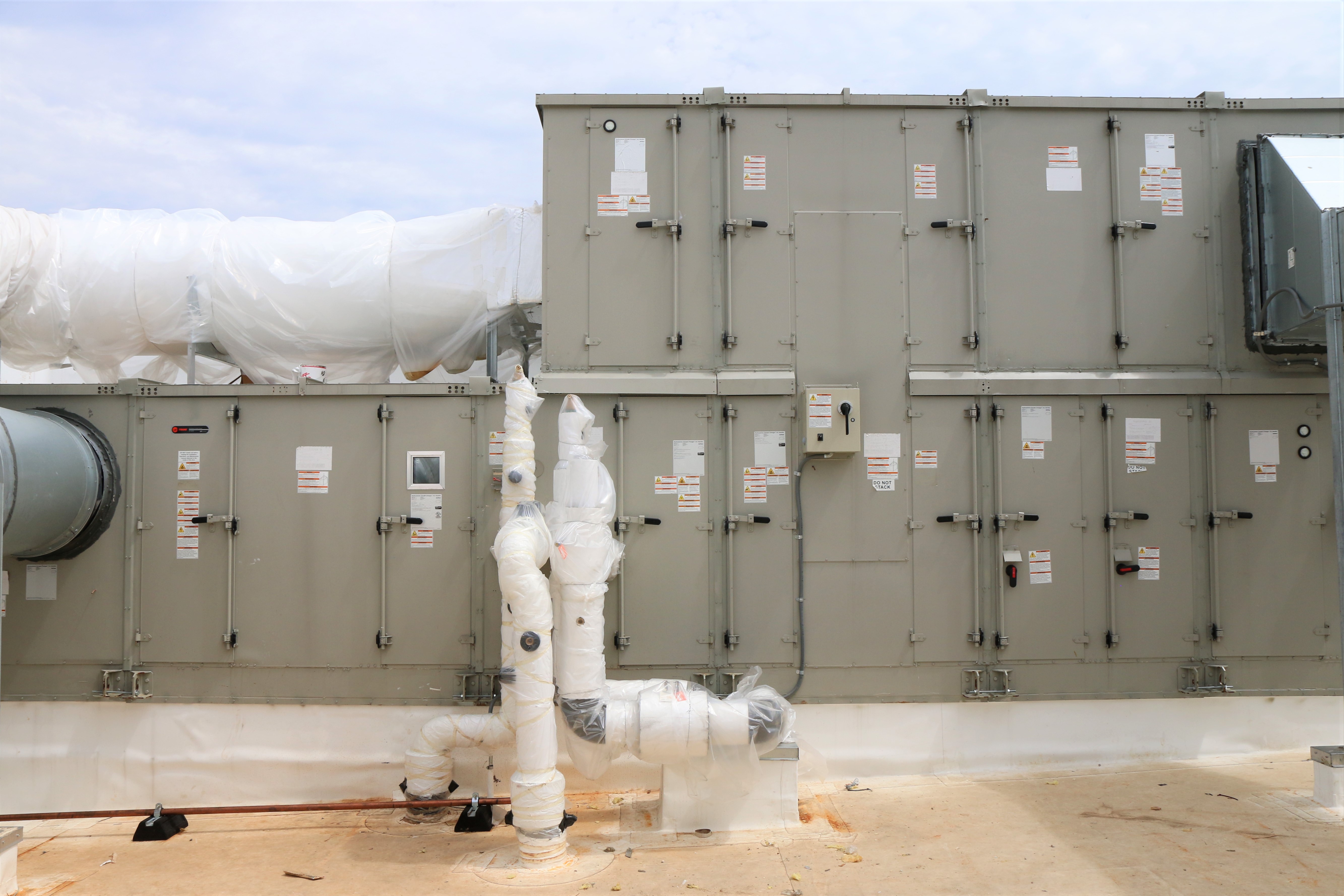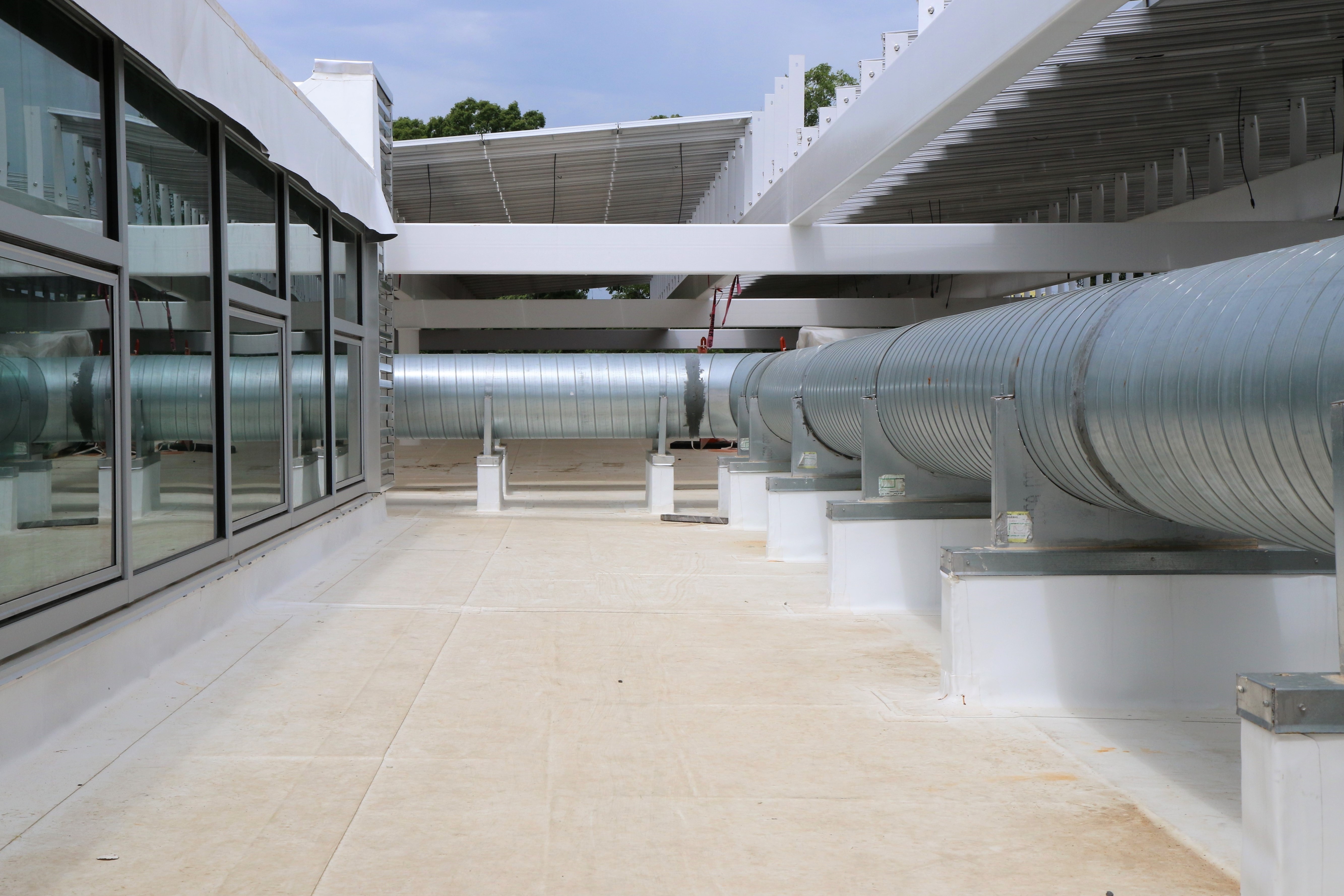Petal: Energy
Imperative 06: Net Positive Energy
Energy Recovery System
The Kendeda Building couples a dedicated outdoor air system (DOAS) with indoor carbon dioxide sensors that determine the amount of outside air that needs to be brought into the building. The system only brings in the amount of outside air that is required by occupants (CO2 being a good measure of occupancy because we exhale CO2). Indoor air is then exhausted in order to maintain a slightly positive pressure in the building.
In the summer, cooler dehumidified indoor air leaves the building and hotter humid air enters. An enthalpy wheel, also known as a thermal wheel, in the DOAS transfers energy and humidity from the incoming hot, humid air stream to the outgoing cooler, drier air stream. This process cools and dehumidifies the outdoor hot, humid air entering the building and thereby reduces the load on the building’s other mechanical systems.
In the winter, the same concept works in reverse. The cold air entering the building is heated by warmer air being exhausted by the building.

